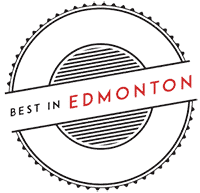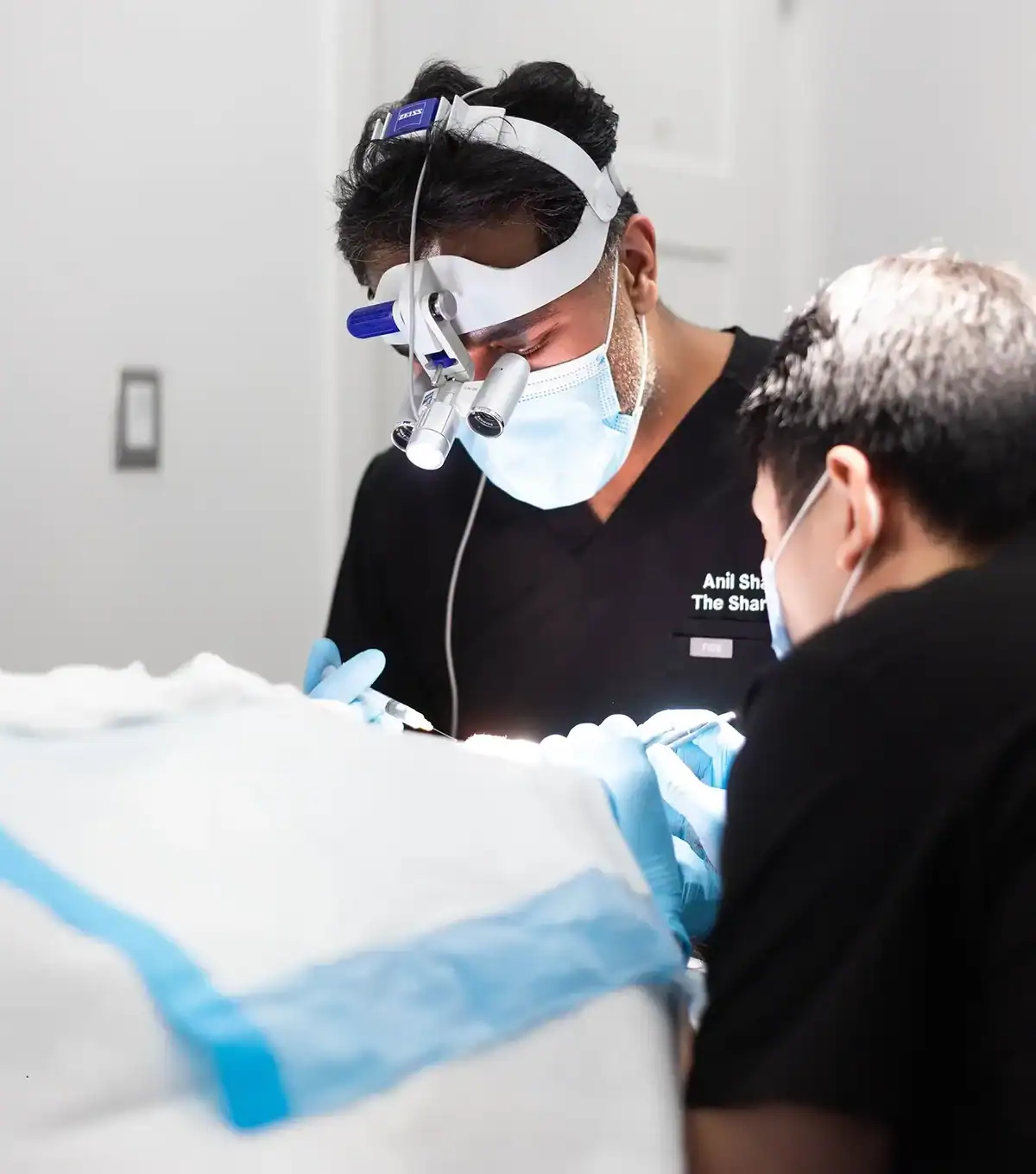A beard transplant in Edmonton is a surgical option available to Calgary patients seeking natural-looking facial hair restoration. This procedure involves implanting individual beard hair grafts to areas like the jaw, cheeks, and upper lip, using advanced techniques adapted specifically for facial zones.





| Scalp Hair Transplant | Facial Hair Transplant (Beard/Moustache) |
|---|---|
| Grafts may contain 1–4 hairs per follicular unit | Uses primarily single-hair grafts for precision |
| Stabilizes loss and may stimulate regrowth | Redistributes DHT-resistant follicles |
| Grafts typically emerge at a more upright angle | Grafts must be placed at flatter angles (10–20°) to mimic facial hair patterns |
| Designed to follow natural scalp flow | Custom incisions made to match facial symmetry and hairline curvature |
| Density varies across zones (crown vs. hairline) | High-density zones like the jawline require closer graft spacing |
| Larger recipient area typically involved | Smaller, highly visible zones demand greater precision |
| Patient Profile | Description |
|---|---|
| Men with Patchy Facial Hair | Genetic or hormonal causes can result in sparse growth that never fully matures |
| Thinning or Decreased Beard Density | For patients who had fuller growth in the past but lost density over time |
| Seeking Non-Medication Options | Ideal for those who prefer surgical over pharmaceutical interventions |
| History of Asymmetrical Growt | Uneven facial hair patterns that affect grooming or symmetry |
| Adequate Donor Supply Available | Donor hair (usually from the scalp) must be sufficient in density and quality |
| Stable Hair Loss Pattern | Results are more predictable when facial growth patterns are stable |
| Good Overall Health | Patients must be free of uncontrolled medical issues that could affect healing |
Individual experiences vary. These results do not guarantee similar outcomes.
| Timeline | What to Expect |
|---|---|
| Day 0–1 | Swelling and redness; grafts appear as small dark spots. Avoid touching or washing the area |
| Days 2–5 | Crusting and itchiness peak. Patients must spray grafts as instructed to maintain moisture |
| Days 5–7 | Most scabs flake off. The area may look pink or patchy. No shaving or direct sun exposure |
| Day 10+ | Transplanted hairs may begin to shed — this is expected and normal |
| Week 3–4 | Skin returns to baseline. Patients can resume shaving if cleared during follow-up |
| 3–6 Months | New hair starts growing. It may look thin or uneven at first |
| 6–12+ Months | Density improves; full results typically visible by 12 months |

Beard and moustache transplants demand surgical precision, careful anatomical planning, and skilled execution by a physician. At our clinic, every step of the procedure, from donor harvesting to graft placement, is conducted by Dr. Sharma, following ISHRS protocols. Our technique prioritizes the viability of hair follicles, proper angle control, and long-term success.
Dr. Sharma has over 15 years of experience in beard surgery and facial hair restoration. He personally performs every step of the surgical process and has conducted more than 1,000 procedures. His practice strictly adheres to the guidelines set by the International Society of Hair Restoration Surgery, which stipulates that all surgical procedures must be performed exclusively by licensed physicians.


“On the actual day of the surgery, I could not have asked for a better experience. All the staff are so knowledgeable, and work in unison like a well-oiled machine. They truly care about your experience and want to ensure that you are comfortable.”
Patient testimonials reflect individual experiences and are not intended to guarantee specific outcomes. Results may vary based on personal health, anatomy, and surgical candidacy. A licensed physician performs all procedures in accordance with the guidelines of the International Society of Hair Restoration Surgery (ISHRS). Testimonials are voluntarily provided and represent the opinions of the individuals, not medical claims or promises.
Not every patient qualifies for facial hair restoration, so a medical consultation is essential to evaluate hair loss patterns, donor areas, and skin condition. If eligible, Dr. Sharma will develop a treatment plan outlining expected outcomes, risks, and recovery.
Consultations are held in person at the Edmonton clinic, even for Calgary patients, ensuring a thorough evaluation of facial anatomy and a detailed discussion of the procedure. This process helps set realistic expectations for each patient.
Those with scarring alopecia or conditions like alopecia areata should consult their dermatologist to ensure their condition is stable, as there are inherent risks in hair transplant procedures for these issues.
If you’re wondering how much a beard transplant costs, this can only be determined after a full evaluation. Consultations for your beard transplant in Edmonton are performed in person by Dr. Sharma.
At the Canadian Hair Transplant Centre, beard transplants are mapped using facial landmarks like jaw width and ramus angle. Dr. Sharma uses customized follicular unit selection and angulation control to ensure natural growth patterns.
Some redness and crusting are normal for the first week. Most patients return to non-strenuous activities within 3–5 days. Shedding occurs in the first few weeks; regrowth begins around 3 months and matures by 9–12 months.
Beard transplants are aesthetic procedures, but they are also used to restore facial symmetry in cases of scarring or congenital absence. Candidates must be medically suitable and committed to long-term follow-up and aftercare.
No. Hair transplantation must use your own DHT-resistant scalp follicles. The immune system would reject donor hair from another person.
All beard transplant assessments are conducted in person to allow proper anatomical measurement and trichoscopic planning. This ensures optimal accuracy in design and medical screening.